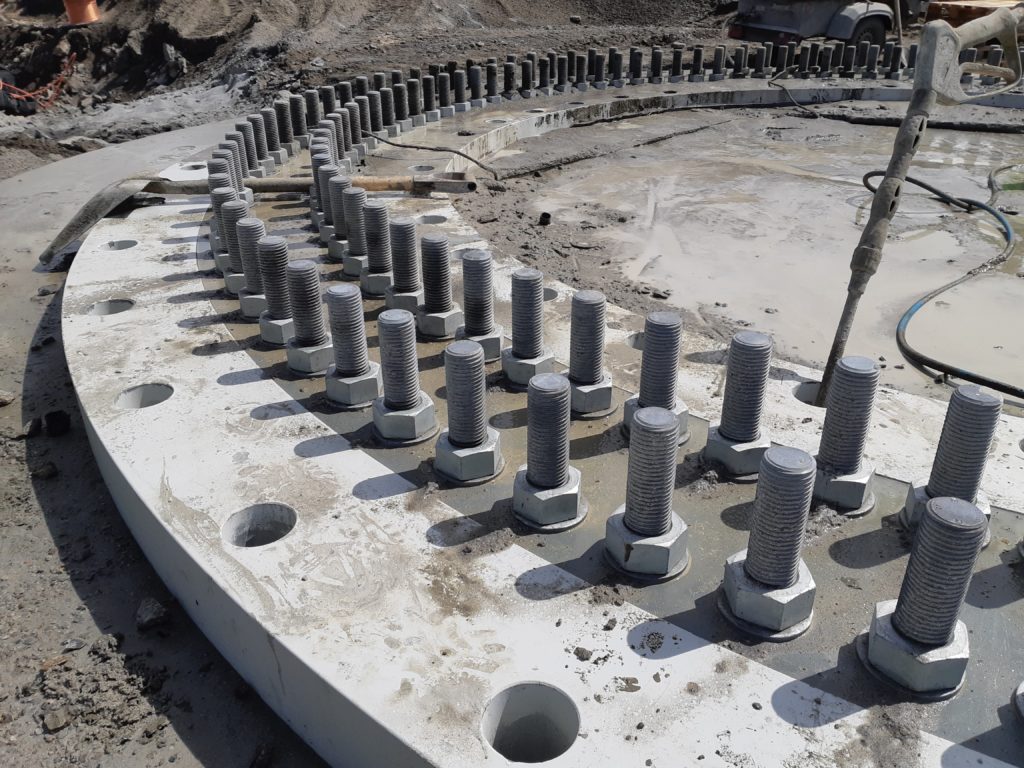Williams Anchors: Industry-Leading Anchoring Systems for Enhanced Architectural Assistance
Williams Anchors: Industry-Leading Anchoring Systems for Enhanced Architectural Assistance
Blog Article
Reliable Rock Anchors for Secure and Steady Structures
In the world of civil design, the duty of trusted rock supports can not be overemphasized, as they are crucial in establishing secure and secure foundations throughout a selection of applications. Recognizing the different types of rock supports, their certain applications, and the intricacies of setup and upkeep is crucial for enhancing their efficiency.
Kinds Of Rock Anchors

Passive anchors rely upon the weight of the structure and the surrounding dirt or rock to give resistance. They are typically utilized in applications where marginal movement is anticipated. Active anchors, on the various other hand, include the application of stress with a high-strength cable or pole, producing a pre-stressed condition in the support. This type is especially advantageous in dynamic atmospheres, such as landslide-prone locations.
Grouted supports are an additional considerable classification, where a steel bar or cable television is inserted into a pierced opening, complied with by a cementitious grout. Once healed, the cement bonds with the bordering rock, producing a robust anchoring system. Each kind of rock support uses distinct advantages based upon the certain geological conditions and structural needs, therefore playing a critical duty in the general integrity and long life of built centers.
Applications in Building And Construction
Rock supports play an essential role in numerous building applications, providing necessary support and security in diverse settings. These innovative remedies are used in tasks ranging from large infrastructure growths to smaller household structures. Among the primary applications of rock supports remains in the stabilization of inclines and keeping wall surfaces, where they help stop dirt erosion and keep structural integrity.
In addition, rock supports are crucial in safeguarding foundations for bridges, tunnels, and skyscraper buildings, ensuring they can hold up against lateral forces such as wind and seismic task. Their convenience permits for installment in difficult geological conditions, making them excellent for tasks in mountainous or rough terrains.

Key Option Requirements
Picking the ideal rock support for a certain application needs cautious factor to consider of several crucial criteria. Firstly, the geological conditions of the site have to be thoroughly examined. Understanding rock kind, strength, and go to website security is necessary to guarantee that the anchor will execute successfully under lots conditions.

One more essential factor is the rust resistance of the support materials. In settings exposed to wetness or chemicals, making use of corrosion-resistant materials will certainly prolong the life expectancy of the supports and maintain architectural honesty in time.
In addition, the anchor's setup approach should line up with the task's requirements and restrictions. Reduce of installation, in addition to the possible influence on surrounding structures, have to be considered.
Setup Methods
Effective installment strategies are critical for the effective performance of rock supports. Correct installation guarantees that the anchors accomplish the wanted load-bearing ability and security within the geological conditions. The first step in the setup procedure entails website analysis, where geological surveys determine the rock type, condition, and any type of prospective difficulties.
As soon as the website is reviewed, the ideal drilling method must be selected-- options include rotary drilling, diamond drilling, or percussion exploration. The choice depends upon rock solidity and ecological considerations. Precise exploration deepness and angle are click here to read vital to make sure that the anchors line up with structural requirements and load circulation.
After exploration, the following stage includes cleaning up the borehole to eliminate particles, which can compromise bond toughness. Following this, the anchor is inserted, and if called for, a grout or resin is infused to enhance adhesion. The treating time of these products need to be complied with, ensuring that the anchors achieve full stamina before any type of tons is applied.
Maintenance and Examination
Correct upkeep and evaluation of rock anchors are vital to guarantee their long-lasting performance and reliability (Williams Anchors). Regular assessments help identify any kind of prospective issues, such as deterioration, variation, or structural fatigue that can jeopardize the integrity of the anchoring system
Regular assessments ought to be performed at defined intervals, taking into consideration ecological variables and the certain application of the rock anchors. Aesthetic inspections need to concentrate on the exposed sections of the anchors, inspecting for signs of corrosion, fractures, or various other anomalies. Additionally, it is critical to examine the bordering geological conditions to detect any kind of shifts in dirt or rock that might impact support performance.
Sometimes, advanced techniques such as lots testing or non-destructive testing might be required to ascertain the anchors' load-bearing ability and overall health and wellness. Correct paperwork of examination findings, maintenance tasks, and any repair services or substitutes carried out is crucial for recurring assessment and conformity with sector standards.
Final Thought
In verdict, dependable rock supports play a critical role in making sure safe and secure and stable foundations throughout numerous building and construction applications. By efficiently transferring tons and boosting security against lateral forces, these anchors add dramatically to the longevity and integrity of structures such as bridges, tunnels, and keeping walls. Strategic selection, setup, and upkeep of rock supports are crucial for maximizing performance and safeguarding public safety, eventually highlighting their value in contemporary design techniques.
Report this page